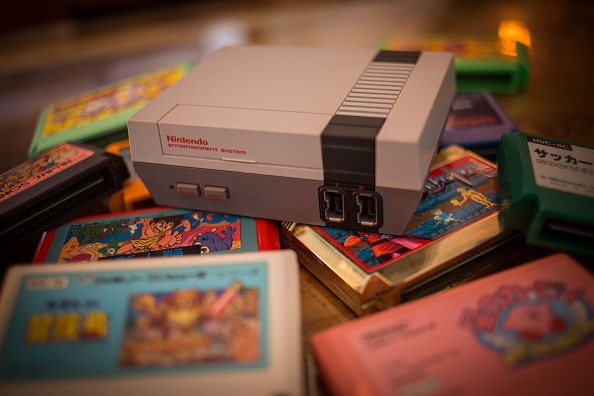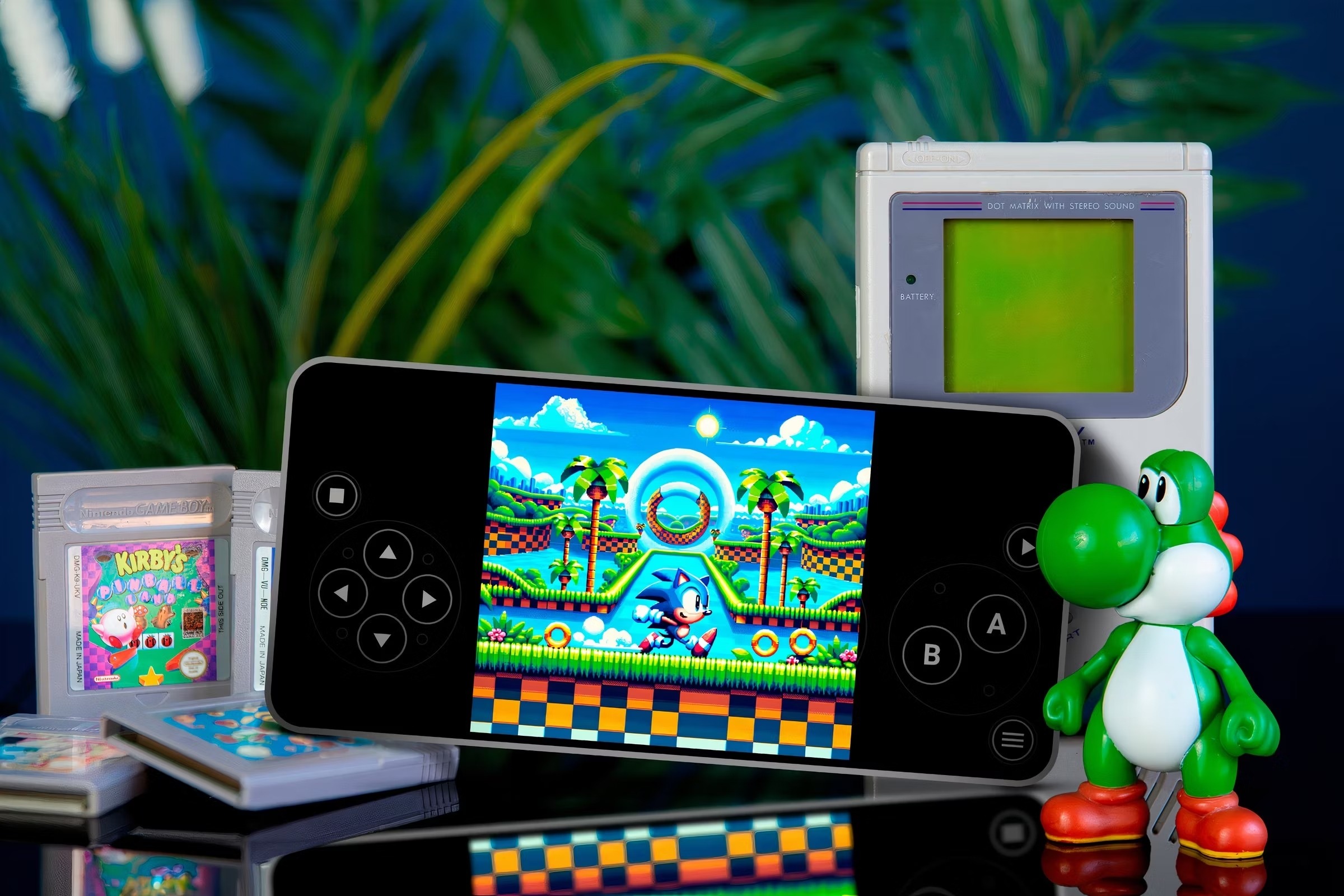In the rapidly evolving world of technology, video games have undergone significant transformations since their inception. However, many classic titles from earlier generations risk being lost forever due to hardware obsolescence and the fragility of physical media. Enter emulation—a powerful tool that has not only breathed new life into old games but has also become crucial in the preservation of video game history. In this blog post, we will explore how emulation contributes to preserving classic titles, the best emulators available today, and the implications for the gaming community.

What is Emulation?
At its core, emulation is the process of imitating one system’s functionality on another. In the context of video games, emulators recreate the hardware of gaming consoles, allowing users to play games designed for those systems on modern computers or devices. This transformation requires a deep understanding of the original hardware’s architecture and functionality, which emulator developers meticulously study to ensure an authentic gaming experience.
The significance of emulation extends beyond mere gameplay; it acts as a bridge between generations of gamers. By recreating the environment in which classic games were meant to be played, emulators offer a nostalgic experience that can evoke memories for those who played these games in their youth while also introducing new players to the classics. As a result, emulation serves as both a technical achievement and a cultural connector, fostering a shared appreciation for video game history.
The Importance of Video Game Preservation
Video game preservation is vital for several reasons. First, video games are a significant part of our cultural history, reflecting the technological advancements and artistic expression of their time. Just as literature, film, and music are studied for their cultural impact, video games deserve the same level of scrutiny. Each game encapsulates the creativity and innovation of its era, contributing to the broader narrative of digital culture.
Second, many classic games are no longer available for purchase due to hardware discontinuation or licensing issues. When a console is phased out and games go out of print, players who want to revisit those experiences often find themselves unable to do so. By preserving these titles through emulation, we ensure that the cultural significance of these games is not lost. Future generations can explore the origins of beloved franchises and appreciate the roots of modern gaming.

How Emulation Aids Preservation
Emulation serves as a digital time capsule, enabling the preservation of games that may not be playable on their original hardware. One of the primary ways emulation aids preservation is by providing access to obsolete hardware. Many classic consoles, like the NES and Sega Genesis, are no longer manufactured, and their components can be challenging to find. Emulators allow players to bypass these hardware limitations, ensuring that titles from these systems can still be enjoyed by enthusiasts today.
Additionally, emulation facilitates the creation of digital backups. Physical media, such as cartridges and discs, can deteriorate over time due to environmental factors, handling, and age. Digital files, on the other hand, can be stored indefinitely without the risk of degradation. This capability not only safeguards beloved games from physical harm but also allows for easier sharing and distribution among fans, further expanding the audience for these classic titles.
Notable Emulators Through the Ages
NES Emulators: Nestopia and FCEUX
The Nintendo Entertainment System (NES) laid the foundation for modern gaming, introducing iconic titles like “Super Mario Bros.” and “The Legend of Zelda.” Two standout emulators for the NES are Nestopia and FCEUX. Nestopia is known for its accuracy and fidelity, closely mimicking the original hardware to provide an authentic experience. It supports a wide range of games and features, making it a favorite among retro gamers seeking to relive their childhood.
On the other hand, FCEUX offers extensive debugging tools, which are particularly appealing to developers and those interested in game modification. Its user-friendly interface and compatibility with numerous game formats make it a versatile choice for anyone looking to explore the NES library. Both emulators exemplify the diversity of options available for those wishing to experience the NES, highlighting how emulation has become a cornerstone of retro gaming.
SNES Emulators: ZSNES and Snes9x
For the Super Nintendo Entertainment System (SNES), ZSNES and Snes9x have emerged as popular choices among emulation enthusiasts. ZSNES is celebrated for its user-friendly features and simple interface, making it accessible for casual players who may not be familiar with emulation. It offers a smooth gaming experience and supports a variety of enhancements, including graphic filters and multiplayer options, making it a go-to emulator for many.
In contrast, Snes9x is often praised for its excellent compatibility with a vast library of games. It supports advanced features like higher resolutions and save states, enabling players to enjoy classic titles with improved visuals and convenience. The continuous development of both emulators reflects the community’s commitment to preserving the SNES library, ensuring that these beloved games remain accessible for future generations.
Sega Genesis Emulators: Kega Fusion and Gens
The Sega Genesis, known for its iconic titles like “Sonic the Hedgehog” and “Shining Force,” also saw its share of remarkable emulators. Kega Fusion is highly regarded for its accuracy and support for various Sega formats, including Master System and Game Gear games. Its extensive features, such as netplay and save state functionality, make it a comprehensive choice for fans of Sega’s classic lineup.
Meanwhile, Gens offers an array of features that enhance the gaming experience, including cheat codes and graphic enhancements. Gens’ ability to run games at higher resolutions allows players to experience Genesis titles in a new light, making it a favorite among retro gamers seeking to relive their childhood experiences with a modern twist. Together, these emulators showcase the diversity and richness of the Sega Genesis library, ensuring its continued relevance in the gaming world.
PlayStation Emulators: ePSXe and PCSX2
With the rise of 3D gaming, the original PlayStation ushered in a new era of gaming experiences. ePSXe has become a prominent emulator for the original PlayStation, known for its exceptional performance on low-end hardware. It supports a wide variety of games and features a simple setup process, making it accessible for newcomers to the emulation scene. Players can enjoy classic titles like “Final Fantasy VII” and “Metal Gear Solid” with improved graphics and save functionality.
On the other hand, PCSX2 is the go-to choice for PlayStation 2 emulation. It allows players to experience beloved titles like “God of War” and “Jak and Daxter” in high definition. PCSX2 boasts an active development community that continuously improves its compatibility and performance. With options to enhance graphics and gameplay, this emulator ensures that the legacy of the PlayStation 2 lives on, providing both nostalgia and quality to fans of the platform.
Handheld Emulators: mGBA and Lime3DS
Handheld consoles have also benefited from emulation, allowing players to enjoy games on the go. mGBA has emerged as a popular choice for Game Boy Advance games, offering a smooth experience with an emphasis on accuracy. It supports various features like cheat codes, save states, and multiplayer options, making it an excellent option for fans of portable gaming. With mGBA, players can dive into classics like “The Legend of Zelda: The Minish Cap” and “Metroid Fusion” with ease.
For Nintendo’s 3DS, Lime3DS, the successor of the discontinued Citra emulator, has quickly become the leading emulator, enabling players to enjoy 3D titles with improved graphics and performance. Lime3DS is continuously updated by a dedicated community of developers who work tirelessly to enhance compatibility and introduce new features. This emulator opens the door to experiences like “The Legend of Zelda: Ocarina of Time 3D” and “Fire Emblem: Awakening,” ensuring that even the most recent classics remain accessible to players, regardless of the original hardware.

The Ethical Debate Surrounding Emulation
While emulation plays a crucial role in preservation, it also raises ethical questions that often spark heated debates within the gaming community. Critics argue that downloading ROMs (the digital versions of games) without owning the original copies constitutes piracy and undermines the intellectual property rights of developers and publishers. They assert that emulation should be limited to games that are no longer commercially available to maintain a balance between preservation and respect for creators’ rights.
Conversely, proponents of emulation argue that if games are no longer available for purchase due to hardware discontinuation or licensing issues, emulation serves as a legitimate means of access. They believe that preserving and sharing these games is essential for maintaining cultural heritage and that the gaming industry benefits from renewed interest in classic titles. This ongoing debate highlights the complexity of the digital age, where preservation and ownership intersect, calling for a nuanced understanding of copyright and access in the gaming world.

Community Contributions and Open-Source Development
The emulation community thrives on collaboration and open-source development, a practice that not only fosters innovation but also creates a sense of belonging among enthusiasts. Many emulators are maintained by volunteers who dedicate their time and expertise to improve the software, fix bugs, and enhance features. This grassroots approach to development ensures that emulators remain current and capable of running a wide range of titles, reflecting the community’s passion for preserving gaming history.
Furthermore, the open-source nature of many emulators allows developers to build upon each other’s work, leading to rapid advancements in technology and capabilities. This collaborative spirit is evident in projects like RetroArch, which aggregates multiple emulators into a single platform, making it easier for users to access various games across different systems. The sense of community not only strengthens the emulation scene but also cultivates a culture of sharing knowledge, resources, and support, ensuring the continued growth and relevance of video game preservation.
The Role of Preservation Organizations
Organizations such as the Video Game History Foundation and the Strong National Museum of Play are actively involved in preserving video game history and recognizing the importance of emulation as a preservation tool. These institutions understand that video games represent a significant cultural and artistic contribution and work tirelessly to archive classic games and educate the public about their historical context. Their efforts include collecting physical copies of games, documenting the development processes, and creating exhibitions that highlight the evolution of gaming.
Collaboration with emulator developers and preservationists is crucial for these organizations, as they recognize that emulation can play a significant role in making these games accessible to a broader audience. By supporting the preservation community, these organizations ensure that the cultural significance of video games is acknowledged and safeguarded for future generations. Their work not only emphasizes the importance of preserving gaming history but also fosters a greater appreciation for the art and innovation behind video game design.

Emulation and the Future of Gaming
As technology continues to evolve, so does the potential for emulation to play an even more significant role in the gaming landscape. With the advent of cloud gaming and virtual reality, the future of game preservation looks promising. Emulators may not only serve as a means of preserving classic titles but also as a bridge to new experiences that blend nostalgia with innovation. As developers explore new technologies, we may see exciting possibilities for how classic games can be re-imagined and experienced.
Additionally, the increasing focus on digital distribution and the ongoing challenges related to hardware obsolescence highlight the importance of emulation in ensuring that gaming history is not lost. As new generations of gamers emerge, the demand for accessible ways to experience classic titles will continue to grow. Emulators will play a vital role in fulfilling this need, allowing players to engage with the past while simultaneously looking forward to the future of gaming.
Conclusion: Celebrating the Legacy of Gaming
In conclusion, emulation has become an invaluable tool in the preservation of video games, acting as a digital time capsule that safeguards our gaming heritage. By providing access to classic titles, facilitating digital backups, and promoting a culture of community collaboration, emulators ensure that the rich history of gaming is not lost to time. Whether you’re a seasoned player or a newcomer, exploring the world of emulation offers a unique opportunity to engage with the past and appreciate the artistry of game design.
As we look to the future, it is crucial to support efforts aimed at preserving video game history, from advocating for ethical emulation practices to recognizing the contributions of preservation organizations. By celebrating the legacy of gaming, we can ensure that future generations continue to experience the joy and creativity that classic games offer. So dust off that old library of games, fire up your favorite emulator, and embark on a nostalgic journey through the rich tapestry of video game history!
